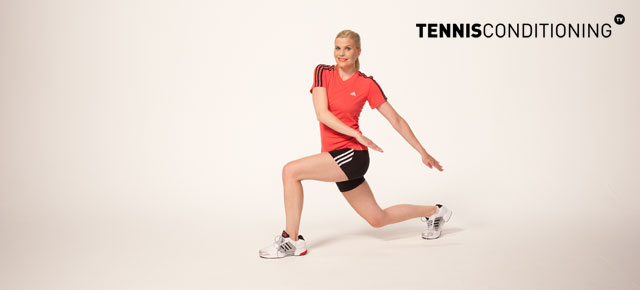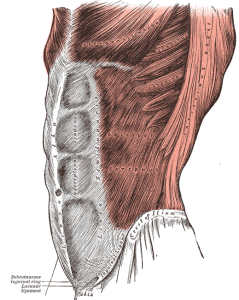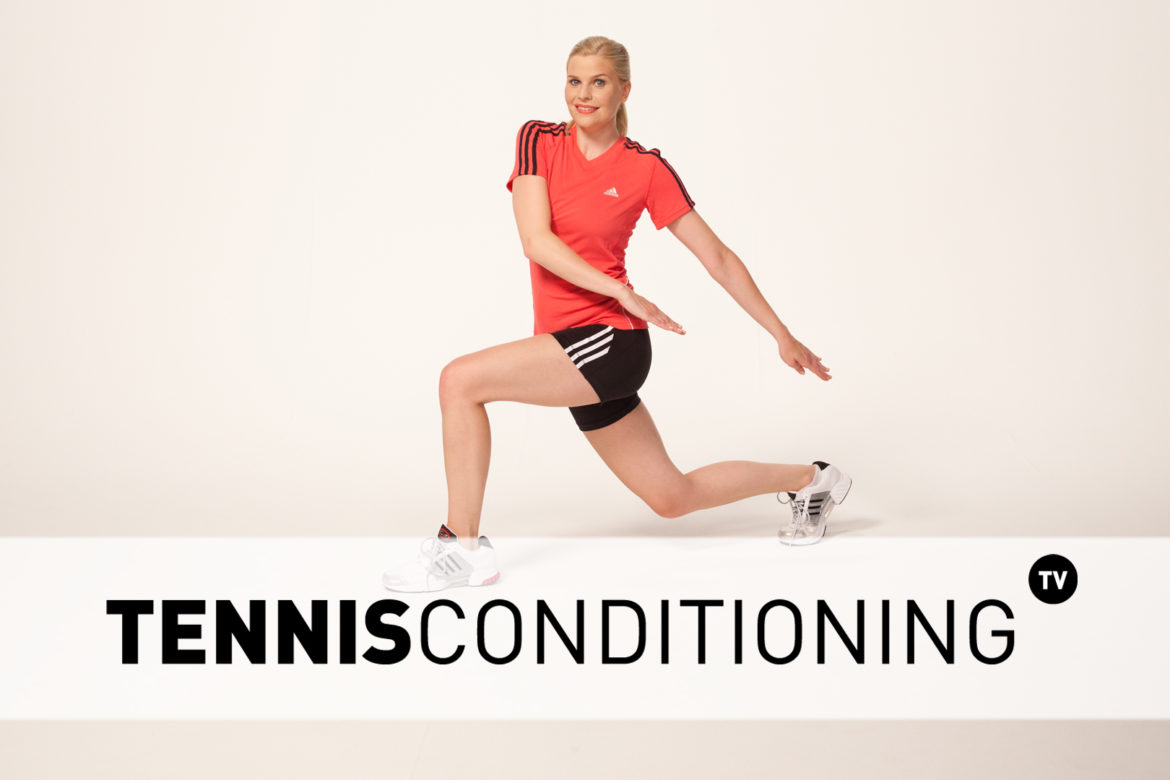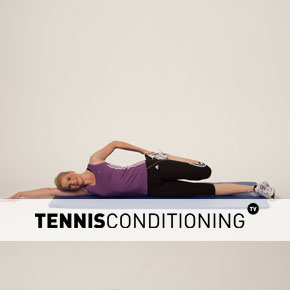The Dynamic Cross Over Lunge Stretch with Heel Reach warms up the leg and trunk musculature that you use during stroke production in tennis.
The dynamic cross over lunge stretch with heel reach optimizes the respective musculature for explosive muscle action such as seen when hitting groundstrokes.
In addition this lunge stretch reduces the risk for injury, improves flexibility and dynamic stability by increasing muscle tissue temperature.
If you are looking for more info check out the benefits of a proper warm up routine.
Dynamic Cross Over Lunge Stretch with Heel Reach Progression
The faster you are doing the lunge and trunk rotation movement, the higher the dynamic stability requirements are going to be. That increases the degree of difficulty.
Therefore, make sure you learn how to perform the dynamic cross over lunge stretch with heel reach in perfect form first before you speed up the action.
Implement the stretch into your dynamic stretching routine prior to your training or workout. This is also a great time to mentally prepare yourself.
Make sure you can control the action throughout the entire range of motion. Otherwise you defeat the purpose of the exercise.
Very often, athletes are not focused and they just go through the motions. They become sloppy. Especially when it comes to maintaining dynamic stability.
Here are the progression levels:
- Beginner: look down during the action
- Advanced: look forward during the action & increase speed
- Professional: close your eyes
As a beginner you want to perform the dynamic lunge and ankle reach stretch in a controlled fashion, especially during the trunk rotation, so that you can maintain dynamic stability throughout the stretch.
Advanced athletes can speed up the action and maintain a narrow base during the lunge position to increase the dynamic stability requirements.
Professional athletes can close their eyes during the action. That makes it even more difficult to maintain dynamic stability throughout the action.
Dynamic Cross Over Lunge Stretch with Heel Reach Summary

- Stand up straight with feet shoulder-width apart
- Perform a cross-over move; right leg crosses over behind the left foot, stepping into a lunge while arms are straight, trunk rotates to the left, and left hand reaches toward the heel of the right foot
- Keep weight on the heel of front foot (left foot)
- Move trailing foot (right foot) in line (parallel) with left foot; feet are shoulder-width apart
- Cross-over with left foot behind the right foot, stepping into a lunge while arms are straight, trunk rotates to the right, and right hand reaches toward the heel of the right foot
- Keep weight on the heel of front foot (right foot)
- Move trailing foot (left foot) in line (parallel) with right foot; feet are shoulder-width apart
- Perform a cross-over move; right leg crosses over behind the left foot, stepping into a lunge while arms are straight, trunk rotates to the left, and left hand reaches toward the heel of the right foot
Targeted Musculature
- Glutes
- Quadriceps
- Hamstrings
- Abductors
- Adductors

“Illu trunk muscles“. Licensed under Public Domain via Wikimedia Commons.
Other Static Oblique, Quad and Glute Stretches For You
Apart from the dynamic cross over lunge stretch we have some other static stretches for you that target the muscles acting on the knee and hip.
You can use these stretches during the cool down once you are finished with your match or training session.
Simply click on them to learn more or watch the videos:
Training Zone
In this section we provide you with some more workouts and training tips you may be interested in to optimize your training:





